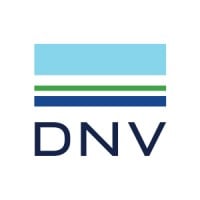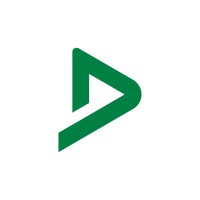
Bundesministerium für Inneres (BMI) Company Cyber Security Posture
bmi.gv.atDas Bundesministerium für Inneres (BMI) ist die Sicherheitsbehörde III. Instanz. Leiter ist der Bundesminister für Inneres, derzeit Mag. Gerhard Karner. Das BMI ist zuständig für das Sicherheitswesen, die Staatsgrenzen und die Organisation des Dienstbetriebs der Bundespolizei. Personenstandsangelegenheiten, etwa das Namensrecht, (soweit diese nicht von Justizbehörden zu vollziehen sind) und Staatsbürgerschaft gehören auch zum Aufgabenbereich. Das BMI ist für die Organisation und Durchführung von Wahlen, Volksbegehren, Volksbefragungen und Volksabstimmungen verantwortlich und organisiert die innere Verwaltung in den Ländern. Außerdem regelt es Angelegenheiten der Gemeinden und Gemeindeverbände, soweit diese nicht in den Wirkungsbereich des Bundeskanzleramtes fallen. Angelegenheiten des Stiftungs- und Fondswesens, soweit sie nicht in den Wirkungsbereich eines anderen Bundesministeriums fallen, sind ebenfalls im Zuständigkeitsbereich des BMI, wie auch der Katastrophenschutz und alle Angelegenheiten der staatlichen Verwaltung, die nicht ausdrücklich einem anderen Bundesministerium oder den Bundesländern zugewiesen sind.
BFI( Company Details
ministry-of-the-interior-austria
10,001+ employees
0
922
Public Safety
bmi.gv.at
Scan still pending
BUN_1322053
In-progress
Between 900 and 1000
This score is AI-generated and less favored by cyber insurers, who prefer the TPRM score.
 BFI( Global Score
BFI( Global Score.png)

Bundesministerium für Inneres (BMI) Company Scoring based on AI Models
| Model Name | Date | Description | Current Score Difference | Score |
|---|---|---|---|---|
| AVERAGE-Industry | 03-12-2025 | This score represents the average cybersecurity rating of companies already scanned within the same industry. It provides a benchmark to compare an individual company's security posture against its industry peers. | N/A | Between 900 and 1000 |
Bundesministerium für Inneres (BMI) Company Cyber Security News & History
| Entity | Type | Severity | Impact | Seen | Url ID | Details | View |
|---|
Bundesministerium für Inneres (BMI) Company Subsidiaries

Das Bundesministerium für Inneres (BMI) ist die Sicherheitsbehörde III. Instanz. Leiter ist der Bundesminister für Inneres, derzeit Mag. Gerhard Karner. Das BMI ist zuständig für das Sicherheitswesen, die Staatsgrenzen und die Organisation des Dienstbetriebs der Bundespolizei. Personenstandsangelegenheiten, etwa das Namensrecht, (soweit diese nicht von Justizbehörden zu vollziehen sind) und Staatsbürgerschaft gehören auch zum Aufgabenbereich. Das BMI ist für die Organisation und Durchführung von Wahlen, Volksbegehren, Volksbefragungen und Volksabstimmungen verantwortlich und organisiert die innere Verwaltung in den Ländern. Außerdem regelt es Angelegenheiten der Gemeinden und Gemeindeverbände, soweit diese nicht in den Wirkungsbereich des Bundeskanzleramtes fallen. Angelegenheiten des Stiftungs- und Fondswesens, soweit sie nicht in den Wirkungsbereich eines anderen Bundesministeriums fallen, sind ebenfalls im Zuständigkeitsbereich des BMI, wie auch der Katastrophenschutz und alle Angelegenheiten der staatlichen Verwaltung, die nicht ausdrücklich einem anderen Bundesministerium oder den Bundesländern zugewiesen sind.
Access Data Using Our API

Get company history
.png)
BFI( Cyber Security News
Qantas attack reveals one phone call is all it takes to crack cybersecurity’s weakest link: humans
Other sectors also at risk from attacks, including healthcare, finance and telecommunications, expert warns.
Hospital cybersecurity is a potential megabill casualty
The cyber community is worried that the megabill's cuts to Medicaid could cripple rural hospitals' already-limited cybersecurity measures.
Cisco Contributes to Cyber Hard Problems Report
Cisco contributes to the latest edition of the Cyber Hard Problems report, highlighting 10 foundational security challenges facing the ...
5 stock picks from an analyst for a new era of cybersecurity threats
Tech expert Arnie Bellini lays out his picks for the best cybersecurity stocks to buy for a likely federal cyber defense push.
3 Top Cybersecurity Stocks to Buy in July
Three of the best cybersecurity stocks you can buy in July are Check Point Software Technologies (CHKP 1.87%), International Business Machines ( ...
Cyber Alert Karnataka: Cybersecurity Deficit Exposed as Attacks Surge
Digital Safety India: Karnataka faces Rs 2915 crore in cybercrime losses in 2024, exposing major cybersecurity gaps across sectors.
News - Rota Recognized for Excellence Achieving Highest Level of Cybersecurity Protection
U.S. Naval Hospital Rota ... This elite designation places the hospital among an exclusive cadre of high-performing military treatment facilities ...
NSU expands cybersecurity, AI programs to meet growing job demand
Northeastern State University boosts Oklahoma's tech industry with new cybersecurity initiatives and AI degrees. Explore how NSU is shaping the ...
Cybersecurity Shake-Up: White House Executive Order Prompts Industry Debate on Risk and Innovation
A new executive order aiming to boost innovation has sparked concern among cybersecurity experts who warn it may weaken key protections.

BFI( Similar Companies

DNV
DNV is the independent expert in risk management and assurance, operating in more than 100 countries. Through its broad experience and deep expertise DNV advances safety and sustainable performance, sets industry benchmarks, and inspires and invents solutions. Whether assessing a new ship design,

DEKRA
DEKRA has been active in the field of safety for almost 100 years. Founded in 1925 in Berlin as Deutscher Kraftfahrzeug-Überwachungs-Verein e.V., it is today one of the world’s leading expert organizations. DEKRA SE is a subsidiary of DEKRA e.V. and manages the Group’s operating business. In 2022,

GNR - Guarda Nacional Republicana
A Guarda Nacional Republicana é uma força de segurança de natureza militar, que tem por missão, no âmbito dos sistemas nacionais de segurança e proteção, assegurar a legalidade democrática, garantir a segurança interna e os direitos dos cidadãos, bem como colaborar na execução da polít

TÜV SÜD
TÜV SÜD is the trusted partner of choice for safety, security and sustainability solutions. Our community of experts is passionate about technology and united by the belief that technology should better people’s lives. We work alongside our customers to anticipate and capitalize on technological d

TÜV Rheinland Group
Neutral, independent third party For more than 150 years, TÜV Rheinland has stood for ensuring quality, safety, and efficiency in conjunction with people, the environment, and technology. As a neutral, independent third party, we test, accompany, develop, promote and certify products, plants, proc

Belgische federale politie
Belgische federale politie Alle informatie over deze publieke onderneming is terug te vinden op http://www.fedpol.be Het Belgische politielandschap wordt gevormd door een geïntegreerde politie met een lokale en een federale component. De federale politie verzorgt de gespecialiseerde steun aan

Frequently Asked Questions (FAQ) on Cybersecurity Incidents
BFI( CyberSecurity History Information
Total Incidents: According to Rankiteo, BFI( has faced 0 incidents in the past.
Incident Types: As of the current reporting period, BFI( has not encountered any cybersecurity incidents.
Total Financial Loss: The total financial loss from these incidents is estimated to be {total_financial_loss}.
Cybersecurity Posture: The company's overall cybersecurity posture is described as Das Bundesministerium für Inneres (BMI) ist die Sicherheitsbehörde III. Instanz. Leiter ist der Bundesminister für Inneres, derzeit Mag. Gerhard Karner. Das BMI ist zuständig für das Sicherheitswesen, die Staatsgrenzen und die Organisation des Dienstbetriebs der Bundespolizei. Personenstandsangelegenheiten, etwa das Namensrecht, (soweit diese nicht von Justizbehörden zu vollziehen sind) und Staatsbürgerschaft gehören auch zum Aufgabenbereich. Das BMI ist für die Organisation und Durchführung von Wahlen, Volksbegehren, Volksbefragungen und Volksabstimmungen verantwortlich und organisiert die innere Verwaltung in den Ländern. Außerdem regelt es Angelegenheiten der Gemeinden und Gemeindeverbände, soweit diese nicht in den Wirkungsbereich des Bundeskanzleramtes fallen. Angelegenheiten des Stiftungs- und Fondswesens, soweit sie nicht in den Wirkungsbereich eines anderen Bundesministeriums fallen, sind ebenfalls im Zuständigkeitsbereich des BMI, wie auch der Katastrophenschutz und alle Angelegenheiten der staatlichen Verwaltung, die nicht ausdrücklich einem anderen Bundesministerium oder den Bundesländern zugewiesen sind..
Detection and Response: The company detects and responds to cybersecurity incidents through {description_of_detection_and_response_process}.
Incident Details
Incident 1: Ransomware Attack
Title: {Incident_Title}
Description: {Brief_description_of_the_incident}
Date Detected: {Detection_Date}
Date Publicly Disclosed: {Disclosure_Date}
Date Resolved: {Resolution_Date}
Type: {Type_of_Attack}
Attack Vector: {Attack_Vector}
Vulnerability Exploited: {Vulnerability}
Threat Actor: {Threat_Actor}
Motivation: {Motivation}
Incident 2: Data Breach
Title: {Incident_Title}
Description: {Brief_description_of_the_incident}
Date Detected: {Detection_Date}
Date Publicly Disclosed: {Disclosure_Date}
Date Resolved: {Resolution_Date}
Type: {Type_of_Attack}
Attack Vector: {Attack_Vector}
Vulnerability Exploited: {Vulnerability}
Threat Actor: {Threat_Actor}
Motivation: {Motivation}
Common Attack Types: As of now, the company has not encountered any reported incidents involving common cyberattacks.
Identification of Attack Vectors: The company identifies the attack vectors used in incidents through {description_of_identification_process}.
Impact of the Incidents
Incident 1: Ransomware Attack
Financial Loss: {Financial_Loss}
Data Compromised: {Data_Compromised}
Systems Affected: {Systems_Affected}
Downtime: {Downtime}
Operational Impact: {Operational_Impact}
Conversion Rate Impact: {Conversion_Rate_Impact}
Revenue Loss: {Revenue_Loss}
Customer Complaints: {Customer_Complaints}
Brand Reputation Impact: {Brand_Reputation_Impact}
Legal Liabilities: {Legal_Liabilities}
Identity Theft Risk: {Identity_Theft_Risk}
Payment Information Risk: {Payment_Information_Risk}
Incident 2: Data Breach
Financial Loss: {Financial_Loss}
Data Compromised: {Data_Compromised}
Systems Affected: {Systems_Affected}
Downtime: {Downtime}
Operational Impact: {Operational_Impact}
Conversion Rate Impact: {Conversion_Rate_Impact}
Revenue Loss: {Revenue_Loss}
Customer Complaints: {Customer_Complaints}
Brand Reputation Impact: {Brand_Reputation_Impact}
Legal Liabilities: {Legal_Liabilities}
Identity Theft Risk: {Identity_Theft_Risk}
Payment Information Risk: {Payment_Information_Risk}
Average Financial Loss: The average financial loss per incident is {average_financial_loss}.
Commonly Compromised Data Types: The types of data most commonly compromised in incidents are {list_of_commonly_compromised_data_types}.
Incident 1: Ransomware Attack
Entity Name: {Entity_Name}
Entity Type: {Entity_Type}
Industry: {Industry}
Location: {Location}
Size: {Size}
Customers Affected: {Customers_Affected}
Incident 2: Data Breach
Entity Name: {Entity_Name}
Entity Type: {Entity_Type}
Industry: {Industry}
Location: {Location}
Size: {Size}
Customers Affected: {Customers_Affected}
Response to the Incidents
Incident 1: Ransomware Attack
Incident Response Plan Activated: {Yes/No}
Third Party Assistance: {Yes/No}
Law Enforcement Notified: {Yes/No}
Containment Measures: {Containment_Measures}
Remediation Measures: {Remediation_Measures}
Recovery Measures: {Recovery_Measures}
Communication Strategy: {Communication_Strategy}
Adaptive Behavioral WAF: {Adaptive_Behavioral_WAF}
On-Demand Scrubbing Services: {On_Demand_Scrubbing_Services}
Network Segmentation: {Network_Segmentation}
Enhanced Monitoring: {Enhanced_Monitoring}
Incident 2: Data Breach
Incident Response Plan Activated: {Yes/No}
Third Party Assistance: {Yes/No}
Law Enforcement Notified: {Yes/No}
Containment Measures: {Containment_Measures}
Remediation Measures: {Remediation_Measures}
Recovery Measures: {Recovery_Measures}
Communication Strategy: {Communication_Strategy}
Adaptive Behavioral WAF: {Adaptive_Behavioral_WAF}
On-Demand Scrubbing Services: {On_Demand_Scrubbing_Services}
Network Segmentation: {Network_Segmentation}
Enhanced Monitoring: {Enhanced_Monitoring}
Incident Response Plan: The company's incident response plan is described as {description_of_incident_response_plan}.
Third-Party Assistance: The company involves third-party assistance in incident response through {description_of_third_party_involvement}.
Data Breach Information
Incident 2: Data Breach
Type of Data Compromised: {Type_of_Data}
Number of Records Exposed: {Number_of_Records}
Sensitivity of Data: {Sensitivity_of_Data}
Data Exfiltration: {Yes/No}
Data Encryption: {Yes/No}
File Types Exposed: {File_Types}
Personally Identifiable Information: {Yes/No}
Prevention of Data Exfiltration: The company takes the following measures to prevent data exfiltration: {description_of_prevention_measures}.
Handling of PII Incidents: The company handles incidents involving personally identifiable information (PII) through {description_of_handling_process}.
Ransomware Information
Incident 1: Ransomware Attack
Ransom Demanded: {Ransom_Amount}
Ransom Paid: {Ransom_Paid}
Ransomware Strain: {Ransomware_Strain}
Data Encryption: {Yes/No}
Data Exfiltration: {Yes/No}
Ransom Payment Policy: The company's policy on paying ransoms in ransomware incidents is described as {description_of_ransom_payment_policy}.
Data Recovery from Ransomware: The company recovers data encrypted by ransomware through {description_of_data_recovery_process}.
Regulatory Compliance
Incident 1: Ransomware Attack
Regulations Violated: {Regulations_Violated}
Fines Imposed: {Fines_Imposed}
Legal Actions: {Legal_Actions}
Regulatory Notifications: {Regulatory_Notifications}
Incident 2: Data Breach
Regulations Violated: {Regulations_Violated}
Fines Imposed: {Fines_Imposed}
Legal Actions: {Legal_Actions}
Regulatory Notifications: {Regulatory_Notifications}
Regulatory Frameworks: The company complies with the following regulatory frameworks regarding cybersecurity: {list_of_regulatory_frameworks}.
Ensuring Regulatory Compliance: The company ensures compliance with regulatory requirements through {description_of_compliance_measures}.
Lessons Learned and Recommendations
Incident 1: Ransomware Attack
Lessons Learned: {Lessons_Learned}
Incident 2: Data Breach
Lessons Learned: {Lessons_Learned}
Incident 1: Ransomware Attack
Recommendations: {Recommendations}
Incident 2: Data Breach
Recommendations: {Recommendations}
Key Lessons Learned: The key lessons learned from past incidents are {list_of_key_lessons_learned}.
Implemented Recommendations: The company has implemented the following recommendations to improve cybersecurity: {list_of_implemented_recommendations}.
References
Additional Resources: Stakeholders can find additional resources on cybersecurity best practices at {list_of_additional_resources}.
Investigation Status
Incident 1: Ransomware Attack
Investigation Status: {Investigation_Status}
Incident 2: Data Breach
Investigation Status: {Investigation_Status}
Communication of Investigation Status: The company communicates the status of incident investigations to stakeholders through {description_of_communication_process}.
Stakeholder and Customer Advisories
Incident 1: Ransomware Attack
Stakeholder Advisories: {Stakeholder_Advisories}
Customer Advisories: {Customer_Advisories}
Incident 2: Data Breach
Stakeholder Advisories: {Stakeholder_Advisories}
Customer Advisories: {Customer_Advisories}
Advisories Provided: The company provides the following advisories to stakeholders and customers following an incident: {description_of_advisories_provided}.
Initial Access Broker
Incident 1: Ransomware Attack
Entry Point: {Entry_Point}
Reconnaissance Period: {Reconnaissance_Period}
Backdoors Established: {Backdoors_Established}
High Value Targets: {High_Value_Targets}
Data Sold on Dark Web: {Yes/No}
Incident 2: Data Breach
Entry Point: {Entry_Point}
Reconnaissance Period: {Reconnaissance_Period}
Backdoors Established: {Backdoors_Established}
High Value Targets: {High_Value_Targets}
Data Sold on Dark Web: {Yes/No}
Monitoring and Mitigation of Initial Access Brokers: The company monitors and mitigates the activities of initial access brokers through {description_of_monitoring_and_mitigation_measures}.
Post-Incident Analysis
Incident 1: Ransomware Attack
Root Causes: {Root_Causes}
Corrective Actions: {Corrective_Actions}
Incident 2: Data Breach
Root Causes: {Root_Causes}
Corrective Actions: {Corrective_Actions}
Post-Incident Analysis Process: The company's process for conducting post-incident analysis is described as {description_of_post_incident_analysis_process}.
Corrective Actions Taken: The company has taken the following corrective actions based on post-incident analysis: {list_of_corrective_actions_taken}.
Additional Questions
General Information
Ransom Payment History: The company has {paid/not_paid} ransoms in the past.
Last Ransom Demanded: The amount of the last ransom demanded was {last_ransom_amount}.
Last Attacking Group: The attacking group in the last incident was {last_attacking_group}.
Incident Details
Most Recent Incident Detected: The most recent incident detected was on {most_recent_incident_detected_date}.
Most Recent Incident Publicly Disclosed: The most recent incident publicly disclosed was on {most_recent_incident_publicly_disclosed_date}.
Most Recent Incident Resolved: The most recent incident resolved was on {most_recent_incident_resolved_date}.
Impact of the Incidents
Highest Financial Loss: The highest financial loss from an incident was {highest_financial_loss}.
Most Significant Data Compromised: The most significant data compromised in an incident was {most_significant_data_compromised}.
Most Significant System Affected: The most significant system affected in an incident was {most_significant_system_affected}.
Response to the Incidents
Third-Party Assistance in Most Recent Incident: The third-party assistance involved in the most recent incident was {third_party_assistance_in_most_recent_incident}.
Containment Measures in Most Recent Incident: The containment measures taken in the most recent incident were {containment_measures_in_most_recent_incident}.
Data Breach Information
Most Sensitive Data Compromised: The most sensitive data compromised in a breach was {most_sensitive_data_compromised}.
Number of Records Exposed: The number of records exposed in the most significant breach was {number_of_records_exposed}.
Ransomware Information
Highest Ransom Demanded: The highest ransom demanded in a ransomware incident was {highest_ransom_demanded}.
Highest Ransom Paid: The highest ransom paid in a ransomware incident was {highest_ransom_paid}.
Regulatory Compliance
Highest Fine Imposed: The highest fine imposed for a regulatory violation was {highest_fine_imposed}.
Most Significant Legal Action: The most significant legal action taken for a regulatory violation was {most_significant_legal_action}.
Lessons Learned and Recommendations
Most Significant Lesson Learned: The most significant lesson learned from past incidents was {most_significant_lesson_learned}.
Most Significant Recommendation Implemented: The most significant recommendation implemented to improve cybersecurity was {most_significant_recommendation_implemented}.
References
Most Recent Source: The most recent source of information about an incident is {most_recent_source}.
Most Recent URL for Additional Resources: The most recent URL for additional resources on cybersecurity best practices is {most_recent_url}.
Investigation Status
Current Status of Most Recent Investigation: The current status of the most recent investigation is {current_status_of_most_recent_investigation}.
Stakeholder and Customer Advisories
Most Recent Stakeholder Advisory: The most recent stakeholder advisory issued was {most_recent_stakeholder_advisory}.
Most Recent Customer Advisory: The most recent customer advisory issued was {most_recent_customer_advisory}.
Initial Access Broker
Most Recent Entry Point: The most recent entry point used by an initial access broker was {most_recent_entry_point}.
Most Recent Reconnaissance Period: The most recent reconnaissance period for an incident was {most_recent_reconnaissance_period}.
Post-Incident Analysis
Most Significant Root Cause: The most significant root cause identified in post-incident analysis was {most_significant_root_cause}.
Most Significant Corrective Action: The most significant corrective action taken based on post-incident analysis was {most_significant_corrective_action}.
What Do We Measure?
















Every week, Rankiteo analyzes billions of signals to give organizations a sharper, faster view of emerging risks. With deeper, more actionable intelligence at their fingertips, security teams can outpace threat actors, respond instantly to Zero-Day attacks, and dramatically shrink their risk exposure window.
These are some of the factors we use to calculate the overall score:
Identify exposed access points, detect misconfigured SSL certificates, and uncover vulnerabilities across the network infrastructure.
Gain visibility into the software components used within an organization to detect vulnerabilities, manage risk, and ensure supply chain security.
Monitor and manage all IT assets and their configurations to ensure accurate, real-time visibility across the company's technology environment.
Leverage real-time insights on active threats, malware campaigns, and emerging vulnerabilities to proactively defend against evolving cyberattacks.




